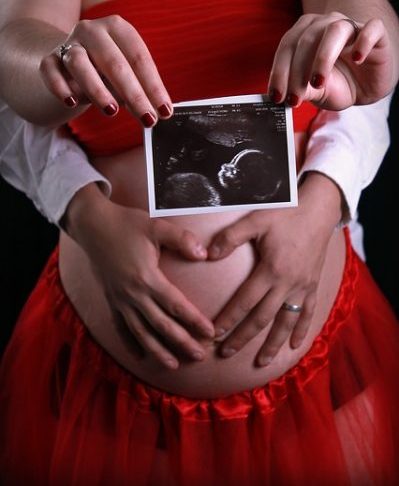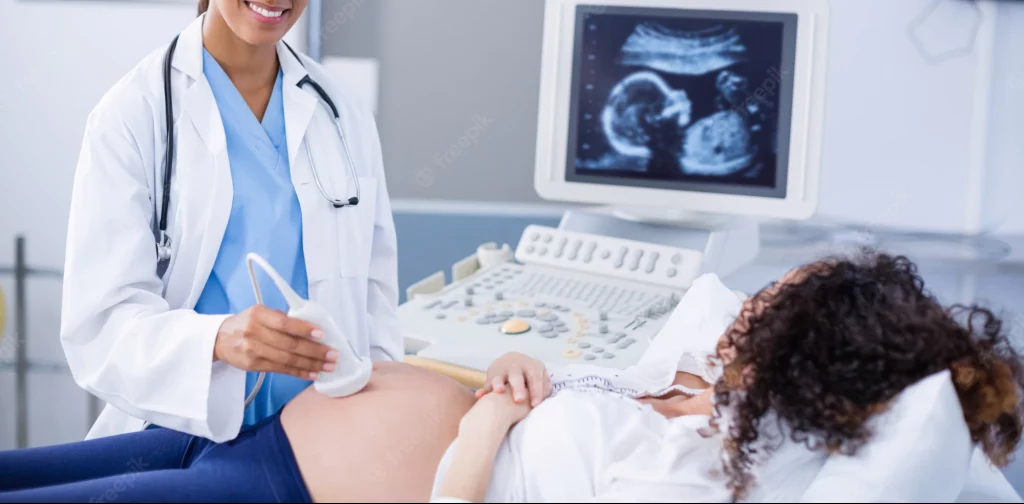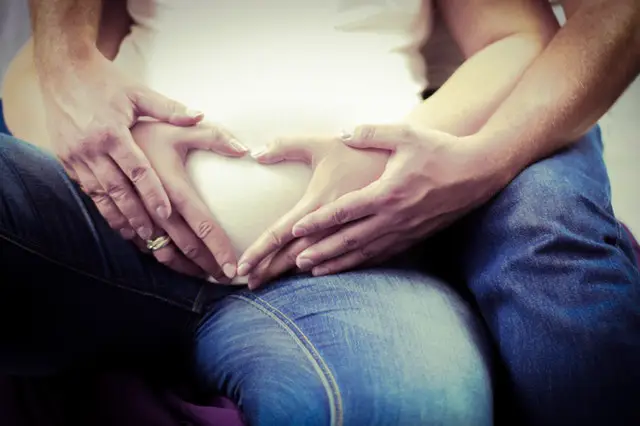To increase the chances of getting pregnant, you must calculate your ovulation day; I accurately discern my ovulation time. And to do that, you need to know precisely when your cycle is. Each woman is unique in her body and mind. Do not forget that your cycle is personal.
The cycle generally of 28 days is made up of 2 phases: a follicular phase of 14 days and a luteal phase of 14 days, with ovulation being the 14th day. The cycle changes in duration mainly at the end of the follicular phase, with the luteal stage remaining for around 14 days.
What are my Chances of Getting Pregnant?
For women, fertility is at the peak of 25 years. It gradually drops from 26 years and then firmly to 38 years. At 25, a couple has about a 25% chance of conceiving a child per cycle. The average design time is 3-6 months.
To get an idea of my day of ovulation, I have to remove 14 days from my total cycle duration (for cycles between 24 and 40 days). Beyond these limits, the cycle is unlikely to be ovulatory; so it is impossible to define the day of ovulation.
Getting pregnant should add spice to your life, not poison your life. The wait is often painful since it brings doubt: would I, too, one day, have a child?
During this period, work as a team with your partner to increase your level of fertility and succeed in designing the most wonderful babies.
At the age of 35, the probability of having a baby is 12% per cycle, while 42 chances are 6% per cycle. After 45 years, spontaneous pregnancies remain exceptional.
What about men’s Infertility?
Thus, 60% of couples in which the woman is 25 years old will have designed after 6 months, 80% a year, and 90% after 2 years. These figures are divided by two when the woman is 35 and 4 for a 42-year-old woman. In addition, at 42 years, only 12% of couples will have a child within two years.
Men are also affected by the decline in fertility. Contrary to popular opinion, the age of humans also impacted the chances of conceiving:
If 78% of men see in 6 months when they are under 25, they are more than 58% to go beyond 35 years. The significant drop in fertility in men is around 45 years old.
It is not enough to stop the pill to be pregnant da: 2 couples on 3 must wait 6 months before that dry… well, Yes, in Ra’s reality, a woman has a 20% chance to get pregnant each cycle. It would help if you determined the duration of its cycle, i.e., the period between the 1st day of the following rules.

It varies from one woman to another, from 25 to 35 days. Then, to find the day of ovulation, attention, and counting backward: we egg 12 to 14 days before the end of the cycle.
Mens Infertility
To increase your chances of getting pregnant, the ideal, therefore to make love in the 2 days before ovulation. Why front? The time required (24 to 48H) for sperm to reach the egg…
Other ways to determine her ovulation include the temperature curve, the observation of the cervical mucus, or tests sold in pharmacies. You can see the planned parenthood or your family doctor to learn more.
To simplify the travel of sperm, a few recommendations of good sense: do not defy gravity and choose ‘classic’ as the missionary position; After love; some advise the wife to “feet to the wall” or to elevate the hips by a pillow, history to give a boost to the sperm.
Smoking, alcohol, and pregnancy

Smoking and alcohol are not top health in general, and for fertility in particular! According to experts, tobacco reduces the level of estrogen. Consequence: a smoker for 35 years has the same fertility as a non-smoker for 40 years.
As for alcohol, it would disrupt the production of progesterone by the egg. Result: the nesting of the fertilized egg is more problematic, and the more frequent miscarriages…A suitable resolution is to stop at least 3 months before conception.
And that also goes for the (future) Dad: tobacco and alcohol affect the quality and vitality of the sperm. A child is two; the proof is done!
Being overweight, that is which minimizes your chances of getting pregnant… But weightless too! Indeed, to work perfectly and produce hormones, the female organism must have a good percentage of fat. We’re talking about “weight of maximum fertility.
“A FEW EXAMPLES, ACCORDING TO NIKKI BRADFORD, THE WEIGHT OF FERTILITY OF A WOMAN OF 1 M 62 IS ABOUT 55 TO 66 KG; A WOMAN OF 1 M 68 IS ABOUT 59 TO 71 KG. THE GOOD NEWS IS THAT THIS “WEIGHT OF MAXIMUM FERTILITY” IS SUPERIOR TO THE “HEALTHY WEIGHT.“
Chances Of Getting Pregnant
Be careful; we’re not saying you need to become a champion of kitesurfing to hope to get pregnant! But a bit of regular exercise, such as swimming or walking, can promote your fertility:
Sport with moderation helps your physical and mental well-being, two essential elements when you want to have a baby.
Similarly, a few months before conception, be more attentive to what you eat. That doesn’t mean putting you on a diet! Just eat a little of everything, varied and balanced.
It will allow you to fill up on all these nutrients essential to male and female fertility naturally: vitamins A, B6, B12, C, and E, essential fatty acids, zinc, selenium, manganese, and iron. And then you will be in great shape for pregnancy!
The good news is that this A ‘maximum of A Fertility weight’ is greater than the A ‘health A ‘ weight. Osteopathy, acupuncture, homeopathy, and herbal medicine can substitute for medically assisted procreation techniques.
But, if you believe in their benefits, they can, at first, regulate your biological functions and decrease any stress detrimental to fertility.
Indeed, stress and fertility do not mix: from a German study on 2000 “infertile” couples, 25% were for emotional problems.
This lack of fertility (irregular cycles, sperm of poor quality, low libido) would be a ‘normal’ Agency’s response in the face of insecurity, as the animals reproduce little when they are in danger or captivity.
Tips to Increase Your Fertility and how to get pregnant fast

Make love often and at the right time. The first chance of getting pregnant is, of course, to make love and to do it at the right time. It is relatively easy to identify the ovulation period for women with a stable cycle of 28 days.
Generally speaking, it is on the 14th day. The preceding four days are also conducive to fertilization since the life of the sperm is four days, and the life of the egg is 48 hours.
Use an ovulation test. Those who do not have a regular menstrual cycle may use an ovulation test. An ovarian urine test detects the increase in luteinizing hormone; which coincides with the period of ovulation.
You can easily target the optimal time to make love and organize a romantic evening! Focus on some positions and aim for orgasm to increase your chances of getting pregnant
The ideal position to become pregnant does not exist, but it seems preferable not to have gravity working against it. For this reason, you should favor positions where you are lying on your back or side.
Orgasm, for its part, is not linked to ovulation, but it would make it possible to put more sperm in the uterus, thanks to the contractions it causes.
No matter what position is chosen and whether or not the orgasm is reached, the secret probably lies more in the enjoyment of it rather than doing the act mechanically.
Reduce your coffee consumption
Some studies, including one from the University of Nevada Faculty of Medicine, show that caffeine has a negative impact on women’s fertility.
Caffeine would cause the muscle cells of the fallopian tubes to be released. The latter has the role of transporting eggs to the uterus. Coffee consumption would, therefore, harm their migration.
Currently, studies do not specify how much of a negative impact caffeine has on fertility. Talk to your doctor.
Avoid alcohol: Alcohol consumption should be prohibited during pregnancy but reduced or reduced when a couple tries to design a child. Drinking two to three glasses of alcohol a day significantly affects fertility among women and men.
Get away from the stress: Not all stress elements are antagonistic. Far from it. However, there is a correlation between stress and infertility.
To put every chance on your side, do not place yourself in stressful situations, or, if you cannot avoid them, find ways or time to relax.
Follow a balanced diet and target your healthy weight
Whether you’re too thin or have excess weight impacts your fertility level.
Do not engage in a draconian regime, or vice versa, but eat balanced meals and exercise daily. This statement is true for both women and men.
Add critical foods to your menu or take supplements.
Many foods promote fertility in women and increase fertility levels in men. Turn to those who are full of vitamin C (oranges, peppers, and broccoli), folic acid (beans and spinach), and Omega 3 (fish), which are rich in zinc (crab and oysters) and calcium and vitamin D (cheese), milk and yogurt).
Of course, if you cannot eat all these foods daily, supplements can be combined with good food.

Keep your man cool: It is not a question of putting it in the fridge but instead of avoiding heat sources. The increase in testicular temperature reduces sperm quality and can even cause millions to die.
For this reason, avoiding saunas, hot baths, wearing underwear or pants too tight, and even holding a laptop on his knees for a long time is recommended.
Don’t let years go before you decide to make a baby.
Many criteria come into play when thinking about having a child. We are often inclined to postpone this moment which will forever transform our lives.
Of course, we have to find the right spouse and have optimal health and financial security, but we must remember that the woman is at the top of his fertility in his twenties.
Subsequently, fertility levels decrease quietly, dropping rapidly as early as 35 years. Men must not ignore this rule either.
Because although they are physically capable of designing a child up to age 60-70, the quality of their sperm deteriorates with years, diminishing their fertility, sometimes at the age of 40.
To Make a baby, you will have more chances by making love on “good days” during your fertile period.
It corresponds to the few days before and after ovulation. to release an oocyte by the ovaries. This period depends on the length of your cycles.
Recall: a cycle is included between the 1st day of the rules and the 1st day of the following rules.
In a typical 28-day cycle, ovulation usually occurs on the 14th, but fertilization can occur during the few days preceding ovulation. To detect your ovulation, you can monitor your temperature curve and cervical gland.
You can also use the ovulation tests. The fertile period usually occurs between 4 days before ovulation and 24 hours after ovulation.
When did Do Pregnancy Symptoms start?
During fertilization, the sperm enters the egg produced by the woman to form the fertilized egg.
Depending on the stages of pregnancy, the egg gradually becomes an embryo, then a fetus. During nidation, the fertilized egg moves to the uterine wall to settle at the upper part of the muscle.
This early stage of pregnancy, which lasts about ten days, corresponds to nesting. Some physical or symptom signs may be associated with this period.
What are the stages of nidation?
What are the characteristic symptoms of this phenomenon? Following fertilization of the egg, the egg begins its migration through the fallopian tubes to the upper uterine muscle.
Within days, the egg migrated to its implantation site and was inserted into the uterine mucosa to develop.
At that time, it is divided into the egg – or future embryo – and trophoblast – or future placenta. This first stage of pregnancy is called “nesting.” It lasts about ten days.
When the egg is implanted, it becomes an embryo. The mother’s body begins to secrete a hormone present only in the case of pregnancy: the beta HCG. The HCG beta rate is almost zero when the woman is not pregnant.
Therefore, the blood dosage of this hormone confirms the onset of pregnancy. Urinary tests in the trade also allow for screening. It is possible that nesting fails. The egg is then evacuated naturally during the rules.
What are the symptoms and distinctive signs of nidation?
Implantation of the egg can cause abdominal pain, cramps, and spasms. The breasts become sensitive or painful.
Light bleeding may also occur, but they are generally without gravity. Abundant bleeding must alert the woman and prompt him to consult a gynecologist quickly.
“ATTENTION: BE SURE NOT TO CONFUSE THE ARRIVAL OF THE RULES WITH BLEEDING-RELATED BLEEDING, WHICH MEANS THAT PREGNANCY HAS STARTED.“
Exceptional cases of extra-uterine pregnancy
During implantation, egg migration may exceptionally occur in an inadequate location: the abdominal, ovarian, or fallopian wall. This is an extra-uterine pregnancy. The risk of bleeding is significant.
Suppose nidation results in the implantation of the fertilized egg in the Fallopian tubes; the hemorrhage may cause subsequent sterility. Extra-uterine pregnancy is announced by intense abdominal pain and abundant bleeding.
This is a surgical emergency.
Nesting is an essential step in pregnancy. Pregnancy is effective when it results in egg implantation in the uterine wall.
Trying To Conceive: 14 Best Ways To Improve Female Fertility
The egg becomes an embryo, and pregnancy can continue normally. Biological, ultrasound and gynecological surveillance will be quickly implemented after confirmation of pregnancy diagnosis by a blood test highlighting.
Early Signs of Pregnancy
Pregnancy is when a woman has a fetus growing in her, most of the time in the womb. Human pregnancy lasts about 40 weeks, or just over 9 months from the last menstrual period until the child is born.
Diagnosis of Pregnancy
Pregnancy tests are sold in a pharmacy. The result is reliable only a few days after a delay of rules. A doctor can also perform a pregnancy test.
Pregnancy test
The pregnancy test measures chorionic gonadotropin, known as HCG or beta-HCG. This hormone is secreted by the cells of the future placenta as soon as the embryo is installed in the uterine wall.
It is detectable about 8 days after fertilization and throughout pregnancy. The amount is maximum in the body between the 7th and 12th week of pregnancy and falls.
The pregnancy test occurs as a stick or card. The device contains antibodies that react in the presence of the pregnancy hormone, indicating a blue line or a small cross depending on the “pregnant” or “not pregnant” state.
Signs of Pregnancy: Am I pregnant?
The first signs of pregnancy are:
- The absence of one or more cycles of menstruation.
- Harder, more significant, more painful breasts to touch. More swollen, darker nipples. Tubers in Montgomery (small glands present on the aréole) are more extensive or effective.
- Nausea or vomiting (usually after a few weeks of pregnancy)
As pregnancy evolves, other symptoms may arise:
Internally:
- Headaches, Excess saliva, especially when it comes to first pregnancy.
- A metallic taste in your mouth.
- Heartburn or gastroesophageal reflux.
- A gum sensitivity.
- Frequent calls to urinate. The uterus grows on the bladder.
- It’s brownish bleeding. Slight bleeding may appear as the egg sets on the uterine wall (nest). If bleeding is very red and accompanied by clots, contact your doctor.
- Vaginal, white, painless, and odorless losses can be abundant.
- Constipation. Constipation is usually more irritating in the second half of pregnancy at the onset when the uterus compresses organs.
- Abdominal pain that recalls menstrual cramps.
- Vaginitis (mushroom infection), and nasal congestion.
- Numbness or pain in hands, especially during the 3 rd quarter and during the night.
- Hemorrhoids and A weight loss at the beginning of pregnancy.
- Dorsal pain, especially in the last months of pregnancy.
Tips To Get Pregnant
In the external appearance:
- A push of acne.
- Water retention or edema (swelling), ankle, legs, or face.
- The appearance of varicose (damaged veins in which blood circulates badly). Usually formed around the 7th month and manifested in a feeling of heaviness or itching.
- The appearance of the pregnancy mask (chloasma), dark spots on the face, mainly the forehead, nose, nozzles, and chin, following exposure to the sun.
- The appearance of a brown line from the navel to the public as the belly grows.
At the psychic level:
- Tiredness, especially in the first trimester of pregnancy.
- Fringes or aversion to certain foods. Loss of appetite, or other days, an appetite challenging to control.
- A sensitivity to certain odors.
- Changing humor, irritability, hypersensitivity.
It’s dizzy. Increasing blood volume and more active work can cause dizziness. They may also be hypoglycemic or caused by lower blood pressure.
- Sleep problems.
- Stress caused by the coming of the future baby.
- Weight gain during pregnancy
- During pregnancy, weight gain follows a lifeline, but weight gain is not the same as the trimester of pregnancy.
In the first quarter, weight gain is low. Some women may lose weight initially when they have nausea or vomiting. In the second quarter, weight gain accelerates. This is the period of fringes or sudden desires (sometimes disgusting).
To avoid excessive weight, it is preferable to split meals (four or five small meals) and prevent abuse of sweet foods. A pregnant woman should have taken at least 6 kilos in the sixth month.
On average, pregnant women earn about 1 to 1.5 kilos per month in the third quarter. This is equivalent to a total weight taken at the end of pregnancy from 9 to 12 kilograms.
Pregnancy Monitoring
Regular visits to a health care professional make it possible to verify that the pregnancy is going smoothly and detect any anomalies.
The first visit for pregnancy follow-up usually occurs between 8 and 12 weeks of pregnancy.
After that, the frequency of visits is a visit of 4 to 6 weeks, followed by closer visits as the date of delivery approaches.
At each appointment, the health professional will check with the pregnant woman:
- Your weight
- Blood pressure
- The height of its uterus
The beats of the baby’s heart (even if one starts to hear about 10 to 12 weeks, the baby’s heart begins to beat 21 or 22 days after fertilization).
Blood and urine tests will be carried out during pregnancy to verify the following:
- The presence of anemia (iron deficiency)
- The presence of an infectious disease that could be transmitted to the baby.
- Blood sugar (blood sugar rate) to detect pregnancy diabetes.
- Blood group and rhesus factor (or Rh). (If the woman is negative Rh, some precautions must be taken.
The woman is given anti-Rh immunoglobulins at 28 weeks and sometimes after delivery.
This treatment will prevent the development of anti-Rh antibodies that could harm the current Pregnancy or Pregnancy).
- Presence of antibodies against rubella
- The presence of urinary infection, even if there are no symptoms.
Ultrasound

During a normal pregnancy, a first ultrasound is performed between 18 and 20 weeks of pregnancy. This review is safe for the fetus and allows the following:
– observe the baby’s development
– determine the age of pregnancy more precisely
– determine the location of the placenta
Observe the majority of organs (heart, liver, kidneys, stomach, bladder, brain, etc.) and baby members, check how many babies there are, and sometimes know the sex of the baby.
Prenatal screening of Trisomy 21
Trisomy 21, also called Down Syndrome, is the most common chromosomal anomaly. It affects a baby in 800 and limits the intellectual development of those affected by it. There is currently no treatment for this disease.
A screening test assesses whether the baby’s likelihood (or risk) of trisomy 21 is low or high.
This test consists of a blood sample, followed by an analysis of the nuchal translucency (the space between the neck skin and the fetus’s spinal column) during an ultrasound between 11 and 13 weeks of pregnancy. This test is safe for the fetus.
Amniocentesis is the most common prenatal diagnosis technique. This test can be performed when 14 weeks of pregnancy have been completed. Amniocentesis takes amniotic fluid in the pregnant woman’s womb with a fine needle inserted into its abdomen.
Amniocentesis, however, has some complications, which can lead to the loss of the fetus.
What are my chances Chances of Getting Pregnant?
Conjugal happiness is achieved only by the coming of a baby, mutual understanding, and parental stability. Having such a happy event in his home is a real problem for several couples who suffer from sterility or other factors that prevent their little angel from being exposed.
The question that persists in this framework, which is based on the best solutions to Chances of Getting Pregnant and Increase Your Fertility, concerns the physiological and mental side at a time…





